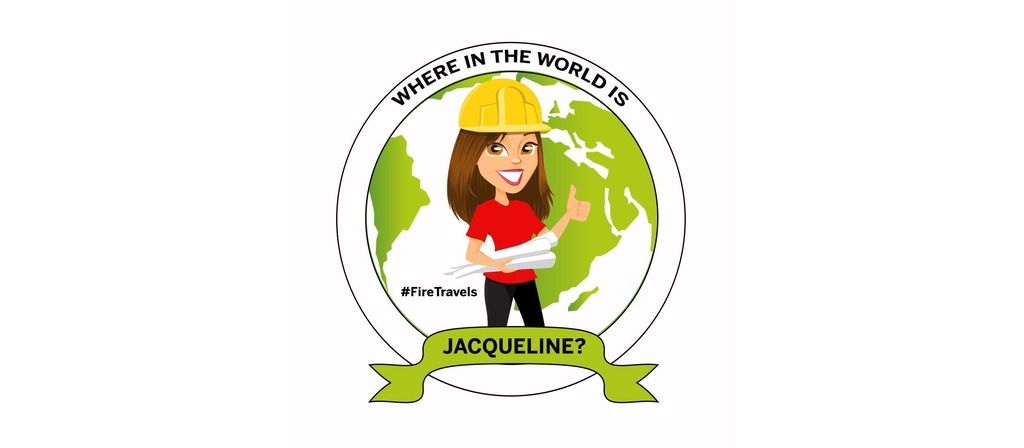My first business trip with BSS was to the National Association of Fire Equipment Distributors (NAFED) meeting last week in Las Vegas. While many remember the 1980 MGM Grand Hotel fire in Las Vegas, the magnitude of that disaster often overshadows the Hilton fire that occurred in the same city just three months later.
Both incidents demonstrate the dangers of gambling with fire safety. The tragic loss of life and property prompted a fundamental shift in Nevada’s fire and life safety regulations, creating lasting impacts that continue to resonate today. I had the chance to see some of the original structure of the MGM Grand Hotel (now the Horseshoe Hotel) and home to the Jubilee Theatre. Rumor has it some of the original stage lighting, while dormant, is still standing as a reminder of the fire.
The MGM Grand Fire

The MGM Grand Hotel caught fire in the early morning hours of November 21st, 1980, due to an electrical ground fault in the bakery area of a restaurant on the casino level. At the time of the fire, the hotel had roughly 5,000 occupants inside the building. The MGM Grand was not fully sprinklered and had flammable interior finishings that led to rapid fire spread, engulfing the casino floor in six minutes. Faulty smoke dampers allowed toxic fumes and smoke to ascend through vertical shafts (elevators and stairwells) to the hotel floors above. Complicating efforts, firefighters were not familiar with the building layout and poor communication networks made incident coordination difficult. The fire lasted 90 minutes and resulted in over 600 injuries and 85 fatalities.
At the time of initial construction, the cost to fully sprinkler the building was estimated at $192,000—a price developers considered excessive and ultimately rejected. In addition to the devastating loss of life, the fire resulted in a $1B loss between the cost in the lack of business continuity, $223M in settlements to victims, $76M in settlement between MGM and insurance companies. The cost to rebuild was $50M, which included, yes, fire sprinkler protection throughout as well as a fire alarm system. Some of the original MGM construction (see sloped roof) remains and houses the Jubilee Theatre.

The Hilton Fire
Just a few months later, a busboy turned arsonist, started a fire on the 8th floor of the Hilton Hotel, now known as the Westgate Hotel, only 2.5 miles from the MGM. Roughly 4,000 people were inside the hotel at the time of the fire, which resulted in over 200 injuries and 8 fatalities. The fire grew quickly, consuming the carpeted walls and ceiling finishes. Flashover occurred, shattering a large window, allowing flames to escape the building, and spread upwards, creating the infamous V shape, on the exterior of the elevator lobbies.
Firefighters applied lessons learned from the MGM Grand fire by quickly alerting hotel guests through television news broadcasts to remain safely in their rooms, significantly increasing survival rates as crews battled the blaze for several hours. The hotel reopened just weeks after the fire, and victims ultimately received a settlement totaling $16.5 million.
Both fires represented a turning of the cards for fire safety in Nevada, with the state instituting a retroactive law requiring existing hotels to install sprinkler systems, which did take years to comply. Additionally, all public buildings in the state at the time, were required to have the following installed: fire sprinkler systems, smoke detectors in rooms and elevators, and major exit maps in all hotel rooms. Have you ever wondered why there is that little map on the back of your hotel room door? Yes, these fires are one of the reasons why that requirement exists today.
The Monte Carlo Hotel Fire
Rarely do we have a chance to measure the successful impact of properly installed and maintained fire protection and life safety systems. However, the 2008 Monte Carlo Hotel fire demonstrated that investing in comprehensive fire protection systems was a jackpot decision, paying off immensely when the stakes were highest.
The fire began as a result of hot work that ignited combustible cladding on the exterior of the building; the fire was extinguished in just an hour and 15 minutes and resulted in 17 injuries and no fatalities.
At the time of the incident, the Monte Carlo (now the Park MGM) had an automatic fire alarm system installed, as well as vertical shaft pressurization systems, and was fully sprinklered. While roughly 6,000 people occupied the space at the time of the fire, the fire alarm system, as designed, sounded the alarm on the fire floor, as well as the floor above and below.
The improvement in technology since the 1980/1981 fires also allowed for the use of pressurized elevator shafts and stairways to keep smoke out and allow guests to safely egress. Fire sprinkler systems also played a pivotal role, preventing fires from spreading into other areas of the hotel. Additionally, hotel staff conducted regular fire drills to practice alerting and evacuating guests, while local fire departments engaged in pre-incident planning to ensure a coordinated emergency response. Communication systems have also significantly improved to allow for mass notification systems as well as radio coverage for first responders. Finally, from the passive fire protection side of things, safety codes often require protective slabs between balconies to prevent fire from ascending upward.
The lesson learned here is simple…. don’t gamble on fire safety, double down.



